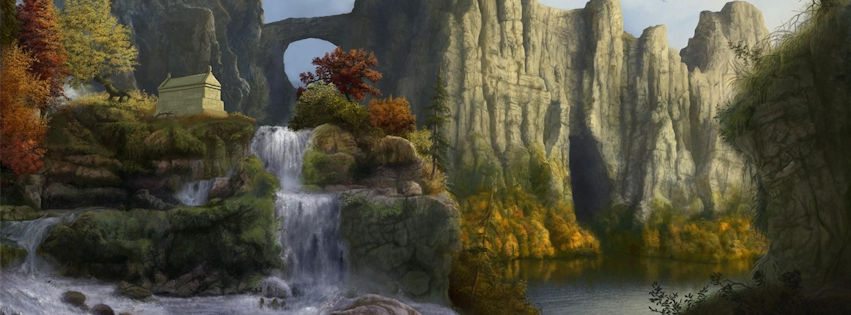Icetooth Bay
A natural deep-water harbor on the southern end of Northguard, Icetooth Bay is one of the only places a ship can safely embark and disembark onto the continent. The port town of Winterpyre rests on it's shores, utilizing Icetooth as it's lifeline to the outside world.
Geography
Unlike much of the shore of Northguard, Icetooth Bay's seafloor is filled with sand and pebbled rock, making it far more ideal a landing spot than the jagged, barren areas surrounding it. The bay itself is deep, even close to the shore; a man with a good throwing arm can hurl a stone from the waterline and it will land in more than fifty fathoms of water! This makes Icetooth an ideal natural harbor; along with the close proximity of several large hills or perhaps small mountains, it is relatively sheltered from the otherwise harsh winter of the continent.
Ecosystem Cycles
During the spring and summer months, the bay is a breathtaking shade of deep blue. The waters are clear and deep, and rarely stirred by storms. However, as summer fades to autumn, and frost begins to dot the rocky shores, ice begins to form. Slowly, at first, but soon, the entirety of the bay becomes a solid block of ice, thick enough a mammoth or a large polar bear can walk across it. What was once a beautiful, serene bay in a chilly land becomes a frozen tundra fit only for the heartiest animals and men.
Fauna & Flora
Deep, cold, clear waters flow through Icetooth Bay, channeled in from The Frigid Depths; along those currents ride thousands of tiny, infinitesimal sea creatures intent of breeding in Icetooth during the brief spring and summer months. But prey brings predators and feeders, and, soon, as the ice within the bay melts for the season, the entire bay is filled with thousands, if not millions, of fish and even birds. From tiny krill to massive whales, Icetooth Bay sees more life than even the Snaketail Delta, thousands of miles to the south.
The massive rock formations bordering portions of the bay, towering high to the clouds, become a breeding ground for millions of migratory bird species, who make their nests in the rocks where ground-based predators can not reach them. Far below, on the rocky, pebble-filled beaches, millions more flightless birds, who made their nests over the harsh winter to hatch in early spring, dot the shoreline as far as the eye can see.
Just as quickly as the explosion of life arrived, as the days grow shorter and the cold begins to set in, the life that began in Northguard quickly vanishes; the predator fish follow the prey as they begin to migrate southward, and the birds make their way to the southern shores of the Land of Giants or Luth Galahd, away from the harsh winter of the frozen pole.
The massive rock formations bordering portions of the bay, towering high to the clouds, become a breeding ground for millions of migratory bird species, who make their nests in the rocks where ground-based predators can not reach them. Far below, on the rocky, pebble-filled beaches, millions more flightless birds, who made their nests over the harsh winter to hatch in early spring, dot the shoreline as far as the eye can see.
Just as quickly as the explosion of life arrived, as the days grow shorter and the cold begins to set in, the life that began in Northguard quickly vanishes; the predator fish follow the prey as they begin to migrate southward, and the birds make their way to the southern shores of the Land of Giants or Luth Galahd, away from the harsh winter of the frozen pole.





Comments